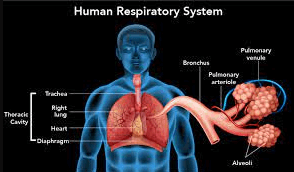Comprehensive Guide to Training in EMDR: A Pathway to Healing Trauma
Introduction
Training in Eye Movement Desensitization and Reprocessing (EMDR) is a transformative journey that equips mental health professionals with the knowledge and skills needed to help individuals heal from trauma and related disorders. EMDR is recognized as an evidence-based therapy that offers hope and healing to those who have experienced trauma. In this comprehensive guide, we will explore the world of EMDR training, including its fundamental components, the importance of EMDR education, the training process, and the benefits of becoming an EMDR therapist.
Understanding EMDR Therapy
Before delving into the training process, it’s essential to understand what EMDR therapy is and why it is regarded as a powerful and effective therapeutic approach. EMDR, which stands for Eye Movement Desensitization and Reprocessing, was developed by Francine Shapiro in the late 1980s. It is a structured psychotherapy approach designed to help individuals process distressing memories and traumatic experiences. EMDR therapy is particularly known for its effectiveness in treating post-traumatic
stress disorder (PTSD), but it is also applied to a wide range of other psychological conditions and challenges.
The primary components of EMDR therapy include the following:
Eight Phases: EMDR therapy is organized into eight distinct phases. These phases guide the therapist and client through a systematic approach to trauma processing, from history-taking and treatment planning to reprocessing memories and achieving emotional resolution.
Bilateral Stimulation: A hallmark feature of EMDR therapy is bilateral stimulation, which can be achieved through eye movements, tactile stimulation, or auditory cues. This stimulation is thought to mimic the
natural processing that occurs during Rapid Eye Movement (REM) sleep and is believed to facilitate the reprocessing of traumatic memories.
Desensitization and Reprocessing: The ultimate goal of EMDR therapy is to desensitize distressing memories and reprocess them in a way that diminishes their emotional charge. This helps individuals integrate traumatic experiences into their life stories more healthily and adaptively.
Resource Development: EMDR therapy involves the identification and installation of positive and adaptive resources that can support the client in processing and healing from trauma. These resources serve as emotional anchors and coping mechanisms.
The Importance of EMDR Education
Training in EMDR is vital because it equips mental health professionals with the knowledge and skills to effectively deliver EMDR therapy. It ensures that therapists understand the theoretical underpinnings of EMDR and are proficient in its practical application. Here are several reasons why EMDR education is important:
Evidence-Based Practice: EMDR therapy is recognized as an evidence-based practice by organizations such as the World Health Organization (WHO) and the American Psychological Association (APA). Training ensures that therapists deliver EMDR in a way that aligns with established protocols and has a strong empirical basis.
Effective Trauma Treatment: EMDR is highly effective in the treatment of PTSD and other trauma-related disorders. Training enables therapists to provide individuals with access to this valuable therapeutic resource.
Client Safety: Understanding EMDR theory and application is essential for ensuring client safety. Training helps therapists make informed clinical decisions, particularly when working with trauma survivors.
Career Advancement: Training in EMDR can open doors to career advancement, job opportunities, and professional recognition. It can also lead to increased job security and earning potential.
Personal Growth: EMDR education often includes experiential components that allow therapists to explore their issues and traumas. This personal growth can be a valuable side benefit.
Training in EMDR: The Process
The process of training in EMDR typically involves several steps and components, each designed to equip therapists with the knowledge and skills needed to provide effective EMDR therapy. Here is an overview of the training process:
Prerequisites: Before enrolling in EMDR training, mental health professionals typically need to meet certain prerequisites. These may include a valid clinical license, a master’s or doctoral degree in a relevant field, and prior experience in clinical practice.
Basic Training: EMDR training begins with the completion of a basic training program, which is typically offered by organizations approved by the EMDR International Association (EMDRIA). Basic training covers the foundational concepts and techniques of EMDR therapy. It usually involves a combination of didactic instruction and experiential components.
Supervision: After completing basic training, therapists are required to undergo supervision to become certified EMDR therapists. This supervision involves working with a qualified EMDR consultant who guides and evaluates the therapist’s clinical skills. Supervision sessions are typically conducted on an hourly basis, and therapists are required to complete a certain number of hours as part of their training.
Certification: To become a fully certified EMDR therapist, individuals must meet specific requirements and adhere to professional standards. These requirements include the completion of supervised sessions, adherence to the EMDR protocol, and an approved case presentation. Certification is typically granted by the EMDR International Association (EMDRIA) or its regional affiliates.
Continuing Education: Maintaining EMDR certification involves ongoing professional development and participation in case consultation. This ensures that therapists stay current with the latest developments in EMDR therapy.
Advanced Training: In addition to basic training, therapists may pursue advanced training in EMDR to further enhance their expertise. Advanced training modules cover more complex topics and techniques, including specialized approaches for specific populations and conditions.
Benefits of Becoming an EMDR Therapist
Training in EMDR and becoming a certified EMDR therapist offers numerous benefits:
Effective Trauma Treatment: EMDR therapy is highly effective in treating trauma-related disorders, which means therapists can make a significant positive impact on their clients’ lives.
Advanced Skills: EMDR therapists possess advanced skills in trauma therapy, equipping them to address complex cases and facilitate healing more effectively.
Career Advancement: Becoming an EMDR therapist can lead to career advancement, including opportunities to work in diverse clinical settings, supervise other therapists, or provide EMDR training to other professionals.
Professional Recognition: EMDR therapy is recognized as an evidence-based practice, and EMDR
therapists are highly regarded in the mental health field. This recognition can enhance a therapist’s professional standing and reputation.
Personal Growth: Training in EMDR often involves personal growth, as therapists explore their issues and traumas while learning to help others heal. This personal growth can be deeply rewarding and transformative.
Contributing to Healing: EMDR therapists have the privilege of contributing to the healing and recovery of individuals who have experienced trauma. This can be a deeply fulfilling aspect of their career.
Conclusion
Training in EMDR is a transformative journey that equips mental health professionals with the knowledge and skills needed to help individuals heal from trauma and related disorders. EMDR therapy is an evidence-based practice known for its effectiveness in treating trauma, and becoming a certified EMDR therapist allows professionals to make a significant positive impact on the lives of their clients. EMDR training involves several steps, including basic training, supervision, certification, and ongoing continuing education. The process ensures that therapists are equipped with the advanced skills and knowledge required to provide effective EMDR therapy.
In addition to professional benefits, becoming an EMDR therapist offers opportunities for personal growth, career advancement, and contributing to the healing of those who have experienced trauma. EMDR
therapy has the power to bring hope and recovery to individuals who have suffered, making it a
deeply rewarding field for those committed to facilitating healing and transformation.







